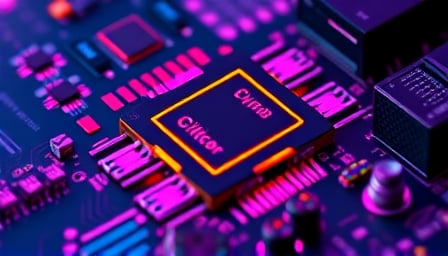Intel’s Turbulent Quarter: A Mixed Bag of Numbers and Uncertainty
Intel’s latest financial report has left investors and analysts scratching their heads, as the company’s performance has been a mixed bag of numbers and uncertainty. On the surface, it appears that Intel has made significant strides in reducing its losses, with a loss per share of 0.27 CAD in the latest quarter, a marked improvement from the previous year’s loss of 0.12 CAD per share.
However, this improvement is tempered by the fact that revenue has only increased by a modest 5.92% compared to the previous year, reaching a respectable 18.18 billion CAD, but still a far cry from the company’s ambitious targets. The real question on everyone’s mind is what this means for the company’s future prospects, and whether Intel’s new CEO, Tan Lip-Bu’s plans will be enough to turn the ship around.
A New CEO’s Vision: Cutting Costs and Focusing on AI
Tan Lip-Bu, Intel’s new CEO has outlined a bold plan to cut the workforce by 20% and shift the company’s focus towards AI. While this may seem like a drastic measure, it’s clear that the company is trying to adapt to the rapidly changing technology landscape. By cutting costs and refocusing on AI, Intel hopes to stay ahead of the curve and capitalize on emerging trends.
However, this plan has already led to a decline in stock value, as investors are uncertain about the impact of these changes on Intel’s bottom line. The company is also facing challenges due to its outsourcing agreement with TSMC, which has created uncertainty about the future of Intel’s manufacturing capabilities.
The TSMC Agreement: A Source of Uncertainty
Intel’s outsourcing agreement with TSMC has been a major point of contention for the company. While TSMC has been a reliable partner for Intel in the past, there are concerns that the agreement may not be as beneficial for Intel in the long run. The agreement has created uncertainty about the future of Intel’s manufacturing capabilities, and whether the company will be able to maintain its competitive edge.
As Intel navigates this uncertain landscape, investors and analysts will be watching closely to see whether the company’s new CEO and plans will be enough to turn the ship around. Will Intel be able to capitalize on emerging trends and stay ahead of the curve, or will it continue to struggle in a rapidly changing technology landscape? Only time will tell.
